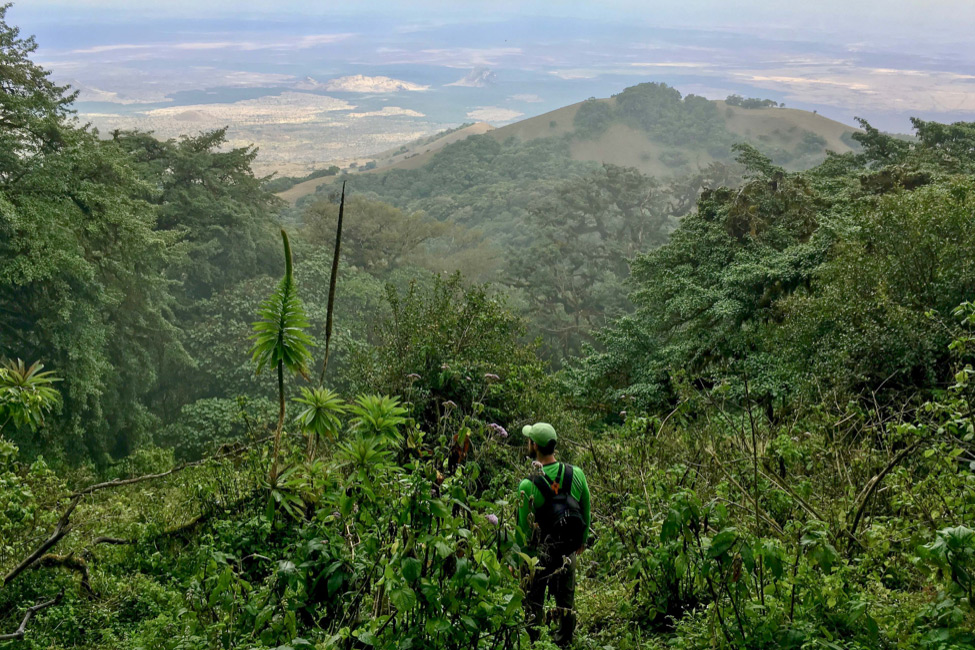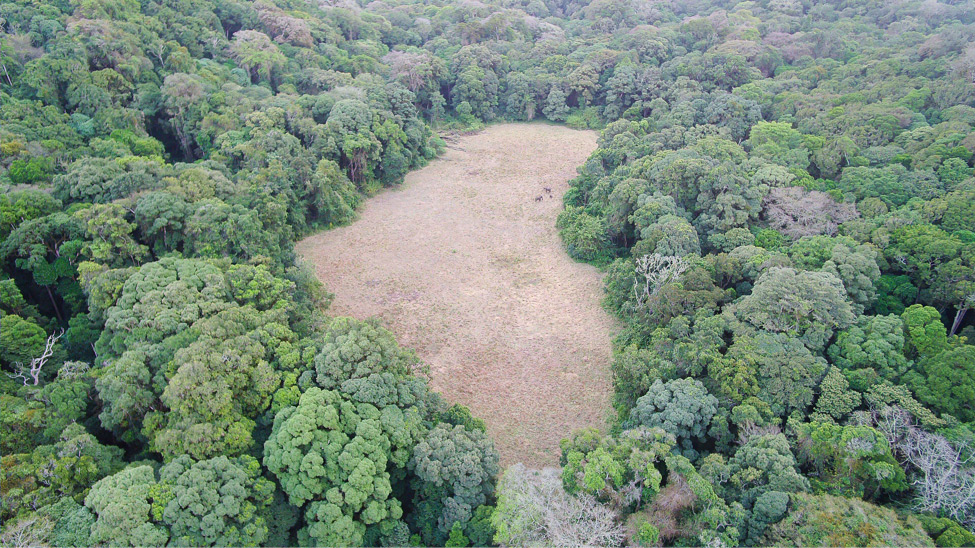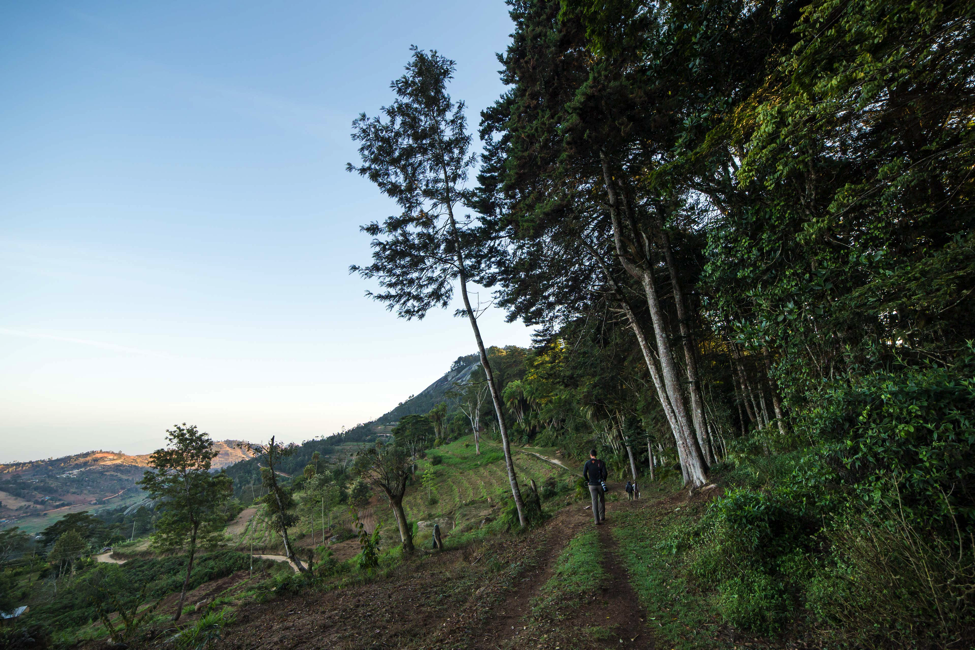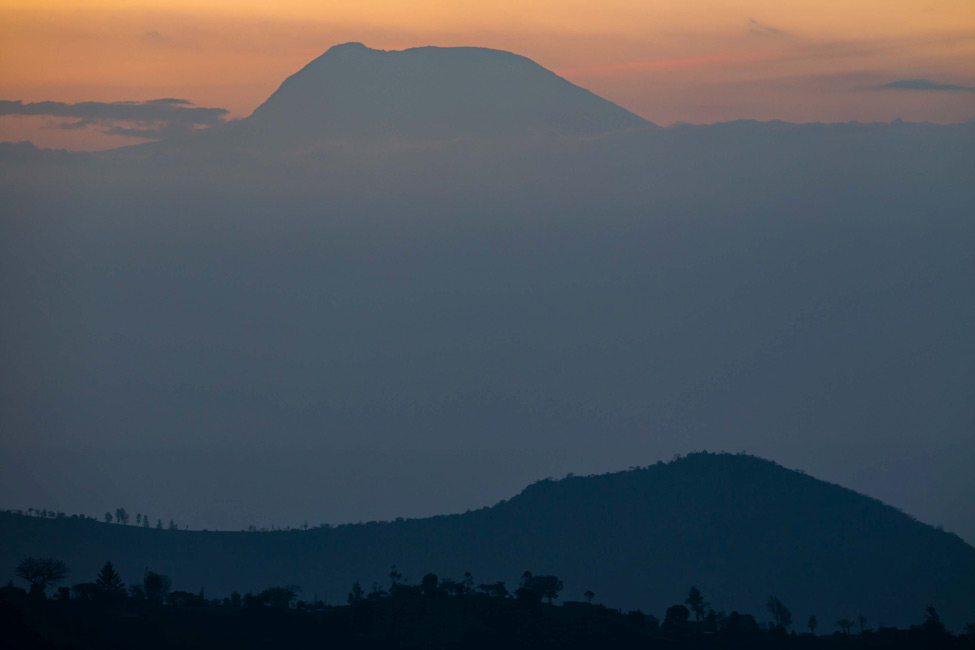Getting past the Buffalo for the Birds
12 December 2017 | East Africa Travel | Jeremy Goss

I was already gasping for breath, the steep incline having conspired with my heavy backpack to expose my previous month’s beer consumption. I can’t remember now if there was a grunt, but I raised my head and my heart stopped.
A herd of buffalo bulls, not known as the friendliest characters, stood sentry at the forest edge. I looked to my companion, Angama Mara’s Tyler Davis, and we both knew we were too close for any evasive maneuvers. We froze. Time slowed, stopped, then re-started, and the buffalo were gone, swallowed up by the dark green forest behind them.
It was this same forest that beckoned us. Protected by a seldom-visited National Park, the Chyulu Hills of southern Kenya divide the wildlife-rich plains of Amboseli and Tsavo. Created by a turbulent volcanic past (the most recent eruptions occurring less than 200 years ago), the hills rise some 7000 ft at their highest point, forcing moisture-rich coastal air to rise and condense. The result is an unexpected chain of cloud forests, oases in a sea of aridity.

The cloud forests of the Chyulu Hills National Park have been well protected, and towering trees live in peace
With three steps we left the sunbaked grasslands and entered a lush paradise, huge trees towering above us. We walked slowly, following paths forged over the centuries by elephants and other forest creatures. The Chyulus are a link in a chain of East African montane forests, which, isolated from other areas of similar habitat, are a genetic playground and home to a number of endemic species. We moved from one birdcall to the next, on the lookout for Shelley’s Francolin, White-starred robin, and Orange Ground Thrush.
Stopping in a clearing, we were joined by three of the most elusive forest dwellers: elephants. The small family moved almost silently, temporarily completing the space, and then melting back into the forest. We were mesmerized, but there were birds to find.

Spot the surprise: standing in a forest clearing we were joined by a family of giants.
Our quest took us south from the Chyulus to another set of isolated cloud forests, those of the Taita Hills. We were there to find three bird species that occur nowhere else on earth outside of this small montane realm. The Taita Thrush, Taita Apalis, and Taita white-eye are all hanging on for dear life, largely confined to four small forest fragments with a total area of only 850 acres. Humans, making way for agriculture and settlement, have destroyed the other 98% of the original Taita forests, and the resulting landscape provides a scary glimpse of what the Chyulu Hills would look like had someone not had the foresight to protect them.

The remaining forests of the Taita Hills are beautiful, but the human dominated landscape is a stark contrast to the Chyulu Hills, and endemic species have suffered as a result
Thankfully someone eventually said ‘enough’, and steps have been taken taken to save what little remains of the Taita forests, and with them their very special plant and animal species. Wandering through the forests we were very grateful for these efforts and with the help of a guide we managed to crawl, creep and call our way to seeing all three of these rare forest species, each one a beautiful but poignant reminder that it is our species who will decide the future of theirs.

Tyler Davis spins some tall bird yarns round the campfire with Joram, the Kenya Forest Service ranger who was our guide and finder of desired birds.
This is modern Kenya, a place of extraordinary natural beauty, much of which is threatened by the pace of chaotic economic development. It’s the question at the coalface of African conservation: how to preserve natural spaces in the face of the needs of rapidly expanding human populations. There are plenty of people working to answer this question, and there is hope – you can find it in the cloud forests of southern Kenya.

Kilimanjaro, seen here from 75 miles away with the Taita Hills in the foreground, towers over everything in this part of southern Kenya
Note from the Editor: I am always happy to see stories posted on the lesser-known parts of Kenya. We have shared many such adventures in our blog – please dip in here for some fun armchair travel across this beautiful country.


